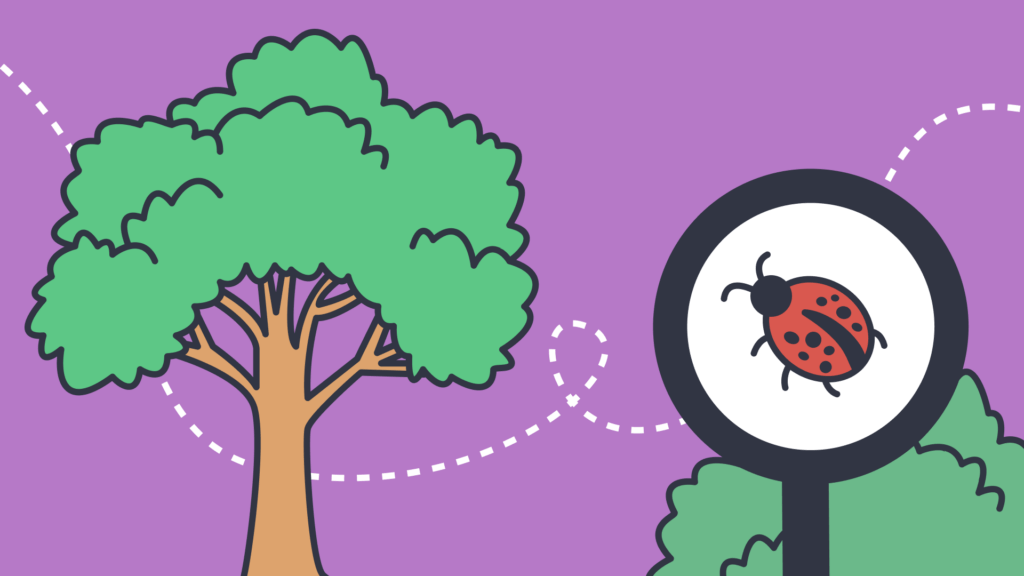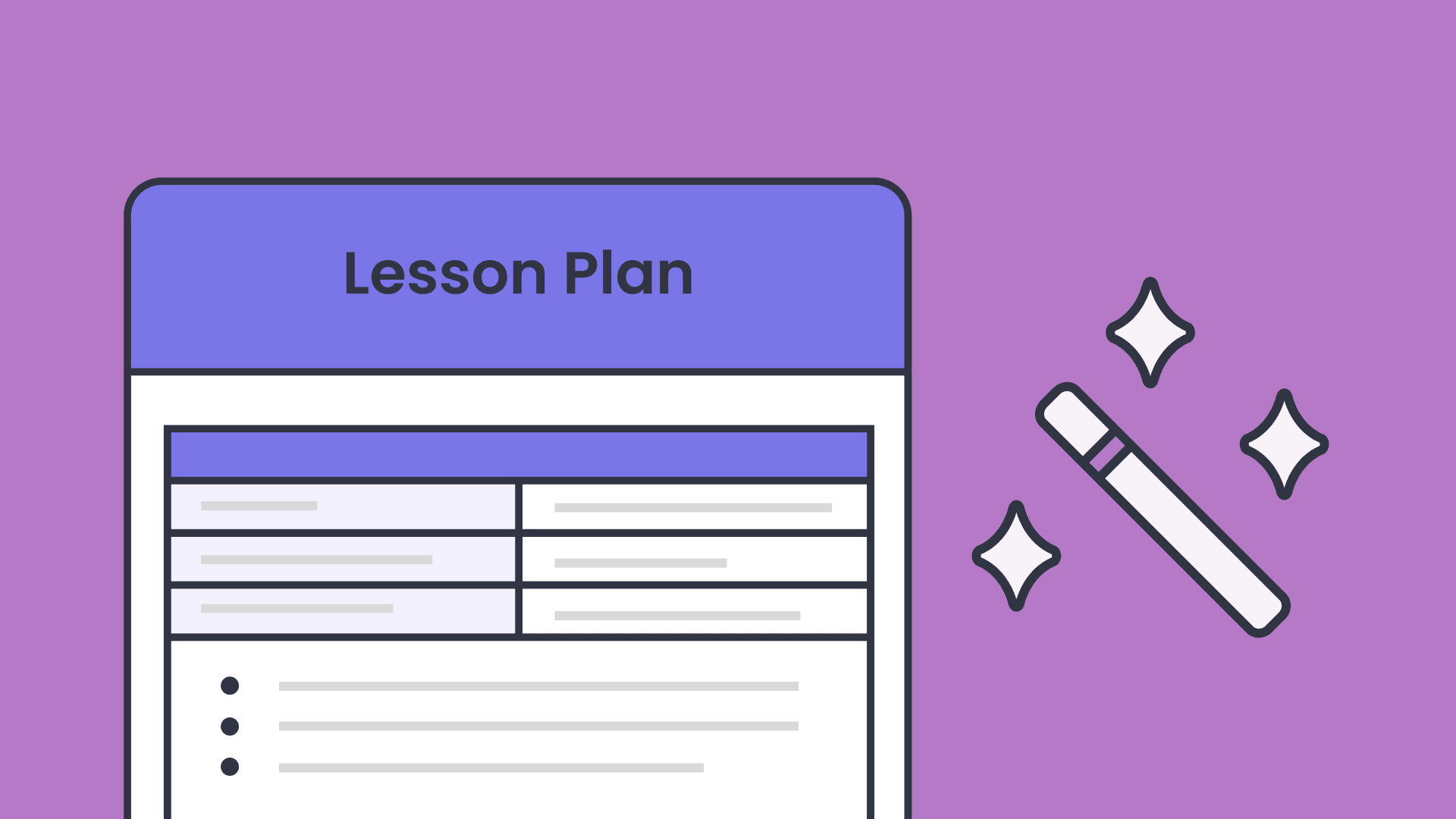What is the 5E model? Lesson plan and instructional guide
In this guide
- What is the 5E instructional model and where did it come from?
- Overview of the five phases: Engage, Explore, Explain, Elaborate, Evaluate
- Sample 5E lesson plan format and how to apply it across subjects
- Benefits of using the 5E model for student learning and inquiry
- Tips for adapting the 5E model to fit different year levels and topics
- Sources:
What is the 5E instructional model and where did it come from?
The 5E instructional model is an inquiry-based instructional model for teaching students. This model requires active learning and within its application the teacher poses as a facilitator, and not the sole source of instruction.
Its 5 phases are:
- Engage,
- Explore,
- Explain,
- Elaborate, and
- Evaluate.
These five phases form the basis for active student learning and engagement. Typically the phases take time and occur over the course of a learning unit. While they can occur in a singular lesson, they are most effective over time giving students time to internalize learning.
The 5E model is most effective when used for new learning or for gaining a deeper understanding of concepts already learned. Research indicates that it is important that the phases be followed in order for maximum effectiveness. However, phases can be repeated to give students more time and a more thorough understanding of a concept.
The 5E model can be used with any age group and subject area. It is most often implemented in STEM classes such as science and math, but it can be adapted to be used within the reading or social studies classroom as well. Later in this article, there are suggestions for how this might look in a classroom.
Overview of the five phases: Engage, Explore, Explain, Elaborate, Evaluate
1) Engage
The Engage phase of the model is where students’ prior knowledge is activated. This is the time to get students excited about learning and to begin to ask questions!
In this phase, the teacher will pose a question or problem. The teacher, as facilitator, will help students to make connections to previous learning. They will also be responsible for setting up the procedures for the activities that are done during the course of the learning cycle. The teacher also encourages students to ask their own questions in anticipation of the learning to come.
Students are making connections to previous learning during this phase. They are asking questions and actively participating. They are also sharing with the teacher and other students what they already know about the topic.
2) Explore

Sometimes, students do not have a solid foundation of background knowledge, or all students in the classroom do not have the same experiences. The Explore phase provides these experiences and creates shared experiences that students can draw from to develop their knowledge and skills.
The Explore phase of the 5E instructional model is where students begin to investigate the question or problem posed by the teacher. These activities give students shared experiences that enhance their learning.
During this phase, the teacher is again acting as facilitator. They will set up the activities and then allow students to explore and inquire on their own (or in groups). Teachers are observing students, providing direction if needed, and asking probing questions.
Students in the Explore phase are predominantly engaging with the materials. Students should be collaborating, asking questions, and conducting investigations.
3) Explain
There are two parts to the Explain phase of the 5E model.
- Students explain what they have learned in the Engage and Explore phases.
- The teacher gives information to enhance the content from the Explore phase.
The Explain phase is where the teacher will include the “teaching” part of the lesson cycle. The teacher will share the instructional content and extend what the students have already learned in the first two phases.
Students are continuing to make connections during the Explain phase by connecting the information the teacher presents to what they learned during the Engage and Explore phases. Students are explaining their learning in their own words, discussing with their peers, and using evidence to support their responses.
4) Elaborate
The Elaborate phase gives students an opportunity to apply what they have learned. It is also the phase where extension of learning occurs. The activities in this phase are an opportunity for students to apply knowledge to new situations, engage in real world applications, and create products to demonstrate their learning.
Here the teacher expects students to use vocabulary and concepts they have learned throughout the lesson cycle. They will also ask questions that lead students to draw conclusions and make connections with their learning. Finally the teacher will provide opportunities for students to apply their knowledge to new situations.
During the Elaborate phase, students will draw conclusions, ask questions, and continue to make connections between prior and new knowledge. Students should be actively engaged in the learning process and applying what they have learned to new situations.
5) Evaluate
The Evaluate phase is where the teacher assesses student learning. Assessments can be both formal and informal. A formal assessment may be a test, written assessment, or the product the students produce. An informal assessment may be an exit ticket or oral response.
Although Evaluate is an independent phase, formative assessment can still occur throughout the process. Formative assessments are assessments used to determine student needs and to drive instruction. In the 5E instructional model, a formative assessment can be used by the teacher to determine if a phase needs more attention, or if students are struggling to grasp materials. Adjustments can be made here in order to improve the learning experience for all students.
During the Evaluate phase, teachers should be using various types of assessments to determine student understanding including
- Open ended questions,
- Short written responses,
- Partner and group talk, and
- Class polls.
Students are answering teacher questions and completing assessments during this phase. Students can also conduct self assessments during the Evaluate phase as well.
If they are producing a written or oral presentation for example, they can use a rubric to determine if they have included all of the required components and if they demonstrate mastery.
Sample 5E lesson plan format and how to apply it across subjects
The 5E lesson plan can be approached in various formats depending on what is required by your school or district. If a specific format is required for lesson plans, a teacher can include the elements of the 5E model to fit that format.
Below is an example of a 5E lesson plan format. I have also included the same lesson plan format completed for two different types of lessons – one for math and one for ELA. In both examples, I am using the Texas Essential Knowledge and Skills, or TEKS, as the learning standards, but this could be adjusted to use the appropriate learning standards for the teacher.
1) Sample lesson plan format
| Problem: | |||||
| Essential question or student learning objective: | |||||
| Standards covered: | |||||
| 5E Phase | Activity | What the students are doing | What the teacher is doing | Concepts learned | Teacher observations, Assessment results, Notes |
| Engage | |||||
| Explore | |||||
| Explain | |||||
| Elaborate | |||||
| Evaluate | |||||
More lines can be added for multiple lessons over one phase. For example, if the Explore phase requires three days of instruction with corresponding activities.
2) Math example: Grade 3, multiplication, TEKS
| Problem: Real-world uses for multiplication |
| Essential question or student learning objective: Students will use the properties of multiplication to solve one- and two-step real-world math problems. |
| Standards covered: – 3.4E – Represent multiplication facts by using a variety of approaches such as repeated addition, equal-sized groups, arrays, area models, equal jumps on a number line, and skip counting. – 3.5B – represent and solve one- and two-step multiplication and division problems within 100 using arrays, strip diagrams, and equations. – 3.5E – represent real-world relationships using number pairs in a table and verbal descriptions. |
| Engage Day 1 |
| Activities: Present the scenario: You and your friends want to buy tickets to a movie. Each ticket costs $8, and you need enough tickets for 6 people. How would you go about deciding how much money you need in total? |
| Students: – Partner discussion: What is the best way to solve this problem? – Class brainstorm: What strategies or resources could you use to solve the problem? |
| Teacher: Present scenario. |
| Concepts learned: Question analysis. |
| Teacher observations, assessment results, notes: |
| Explore Day 1 |
| Activities: Use manipulatives to represent how this problem could be solved. |
| Students: – Organize manipulatives. – Create one other way that this problem could be addressed e.g. create an array, repeated addition. |
| Teacher: – Provide manipulatives – Ask open-ended questions: 1. What are other ways you could represent this information? 2. Why is it important to consider multiple ways to solve a problem? |
| Concepts learned: Arrays |
| Teacher observations, assessment results, notes: Students A, B, and D need small group instruction – arrays. |
| Explain Day 2 |
| Activities: – Mini lesson – Vocabulary factor and product using multiplication chart to explain. – Interactive notebook page – vocabulary. – Think-pair-share: – Using the vocabulary learned, answer the question: If each shelf of a bookshelf can hold 5 books and there are three shelves, how many total books can be on the bookshelf? |
| Students: Discuss the problem using the vocabulary learned (factor and product). |
| Teacher: – Teach Vocabulary: 1. Factor 2. Product – Prepare a mini lesson. – Observing and listening to students during think-pair-share. – Correcting misconceptions. |
| Concepts learned: New vocabulary and application. |
| Teacher observations, assessment results, notes: – Students are ready to move to the next phase, no need for further activity. – Include at least 3 questions on the test that address real-world scenarios with multiplication. |
| Elaborate Day 2/3 |
| Activities: – Multiple packages of items: Students find the number of items using the description on the package – In small groups: Write multiplication scenarios using data collected from activity. – Small groups share problems with another small group and work together to determine solutions. – Exit ticket: Create a question that represents how you would use multiplication in your own life and solve your equation. |
| Students: Work in small groups. |
| Teacher: – Collect materials (packages with multiple items). – Observe. |
| Questions to ask: 1. When looking at the package, what can we use to determine the number of items inside? 2. Are there other ways you could figure out how many items the package contains? 3. What other mathematical processes can you use to determine quantity? |
| Concepts learned: – Real-world scenarios – Creating multiplication problems. |
| Teacher observations, assessment results, notes: Students A, B, and D need small group instruction – arrays. |
| Evaluate Day 4 |
| Activities: – Math assessment: At least 10 questions, 3 have real-world examples. – Formative assessments throughout: 1. Exit ticket (elaborate). 2. Discussion questions (explain). |
| Students: Complete assessment. |
| Teacher: – Create a summative assessment. – Use formative assessment data to drive instructional choices. |
| Concepts learned: |
| Teacher observations, assessment results, notes: – Assessment Results: 1. Students A, B, and D were able to successfully master concepts after mini-lesson 2. 90% passing rate for summative assessment. – Move to next concept: Work with those that did not pass to scaffold concepts in the next unit. |
3) ELA example: Grade 10, High school English II
| Problem: Importance of ambition. |
| Essential Question or Student learning objective: Students will analyze characters and author’s purpose to determine the importance of ambition in success. |
| Standards covered: – ELA.10.6(A): Analyze how themes are developed through characterization and plot. – ELA.10.7(C): Analyze the function of dramatic conventions such as asides, soliloquies, dramatic irony, and satire. – ELA.10.8.(A): Analyze the author’s purpose, audience, and message within a text. – ELA 10.4(F): Make inferences and use evidence to support understanding. |
| Engage (1 Day) |
| Activities: 1. Journal response/bell ringer: – Is it ever justifiable to do something wrong for personal gain? – Discuss with a partner. 2. Anticipation guide – ‘Macbeth’. 3. Video – ‘Macbeth’ in context. |
| Students: – Writing in a journal. – Discussion with a partner. – Discussion stems: It is justifiable because…/It is not justifiable because… |
| Teacher: 1. Observing, listening. 2. Video clip. |
| Concepts learned: Justifying responses in discussion within the context of text. |
| Teacher observations, assessment results, notes: |
| Questions: 1. What situations are justifiable? 2. How important is it to consider others when making decisions? 3. How are the concepts of power and ambition linked? |
| Explore (1-2 days) |
| Activities: 1. Read Act 1, Scene VII (Macbeth’s soliloquy) and 2. Act II, Scene II (after Duncan’s murder). 3. In small groups create a Character Conflict Chart on chart paper. – Macbeth’s choices – Macbeth’s internal and external conflicts – Consequences of Macbeth’s actions. 4. Gallery Walk – Groups observe other groups’ charts, add any observations, and discuss questions: – What ideas were similar among groups? – What new ideas or observations did you gain from other groups? |
| Students: 1. Annotate the text: Focus on language, tone, and conflicting ideas. 2. Participate in group discussion and chart creation. 3. Discussion stems: It is justifiable because…/It is not justifiable because… |
| Teacher: 1. Review how to annotate with students, give examples, review internal and external conflict. 2. Observe as students participate in group work and discussion. 3. Provide materials. |
| Concepts learned: – Annotating texts. – Identifying language, tone, and conflicts. – Group discussion. |
| Teacher observations, assessment results, notes: |
| Intentional grouping: – Students A, B, and C are newcomer English learners and need to be grouped with students that can support their language needs, provide word banks of key vocabulary. – Students G, H, and J need additional scaffolds for annotating a text. |
| Elaborate (1-2 Days) |
| Activities: Choice board: – Write an internal monologue for a student tempted by ambition by cheating on a test. – Compare and contrast Macbeth’s ambition with another character in the play (Lady Macbeth, Banquo, Macduff, etc.). – Write an essay: Does ambition always lead to moral corruption? Use ‘Macbeth’ and a modern example. – Create a visual representation of Macbeth’s moral dilemma. Include symbols and a brief analysis of how those symbols relate to the text. – Rewrite a key scene from the perspective of another character – Focus on ambition and decision making. |
| Students: 1. Choose choice board activity. 2. Use rubric to assess chosen activity for all necessary components. |
| Teacher: 1. Assign choice board activities. 2. Provide a rubric for evaluation of activity. |
| Concepts learned: – Creating, writing, self-assessment, text analysis |
| Teacher observations, assessment results, notes: |
| Evaluate (1 Day) |
| Activities: – Choice board activity will be the assessment of learning for the lesson cycle. |
| Students: – Self-assess using rubric. |
| Teacher: – Provide and use rubric for evaluation of student work. |
| Concepts learned: – Using a rubric for self-assessment. |
| Teacher observations, assessment results, notes: – Create rubric. |
Benefits of using the 5E model for student learning and inquiry
The 5E instructional model provides several benefits for student learning. These benefits enhance students’ skills with problem solving and provide a classroom environment that encourages inquiry and critical thinking skills development.
1) Active learning
One of the primary benefits of this model of instruction is that it encourages active learning. Students are a part of the learning process and not simply being taught. The teacher takes on the role of facilitator not just instructor.
Students must participate in the activities for them to be meaningful. Therefore
- The activities are engaging.
- Students are not listening to a lecture or mindless note-taking.
- They are engaging in hands-on activities that promote their critical thinking skills.
Another part of active learning that is represented in the 5E model is collaboration. Students are collaborating with other students. They are
- Creating models,
- Asking questions, and
- Discussing possible solutions with the other students in the classroom.
Collaboration skills are vital for students as they progress further in education and into their lives outside of academics.
2) Student-centered learning

Student generated questions are a major component of the 5E model. This means that students are directing much of the learning. Students
- Conduct experiments,
- Find solutions, and
- Evaluate their learning.
When learning is student-centered it is more engaging. Students can take ownership for their learning.
One part of student-centered learning that can easily be incorporated into the 5E lesson plan is student choice. Students can be given choices for the activities they do to engage with content. They can be given a choice regarding how their learning is evaluated. For example, they can give an oral presentation, a digital presentation, or a written presentation.
Choices increase student engagement and allow students to determine how they best learn and demonstrate their understanding.
3) Built in reflection
Finding time to reflect on our teaching practice can be difficult. It can also be difficult to find time to allow students to reflect on their learning. The 5E instructional model allows for this time. Because the model does not typically happen all in one day, the time to complete the whole learning cycle is spread out.
The use of questioning techniques within the model also increases reflection time. Asking questions on a regular basis throughout a lesson cycle gives teachers and students time to evaluate understanding and is a type of formative assessment. For example, through direct and open-ended questioning, a teacher may determine that a group of students has a misconception about the concepts being learned. The teacher is able to correct that misconception in real-time.
4) Enhanced critical thinking and inquiry-based learning
As I have already stated throughout this article, the 5E instructional model provides a great opportunity for students to engage in critical thinking and inquiry-based learning.
Critical thinking skills are relevant to not only academic pursuits, but in life as well. Being able to evaluate a problem, pose possible solutions, and use thinking skills to determine what solution is the best is a life skill. The 5E model gives students a framework for developing those skills.
Inquiry-based learning goes hand-in-hand with critical thinking skills. Being able to develop questions and to respond to questions is also a life skill. Through inquiry-based learning students develop questioning and solution finding skills that are useful throughout their academic lives and beyond.
5) Differentiated learning
Differentiation is a word that is frequently used in education. Teachers are required to differentiate their instruction based on student needs. Within any classroom there are students of
- Various social needs,
- Those needing accommodations,
- Language learners, and
- Students at different levels of academic understanding.
The 5E instructional model easily allows space for addressing the differentiated needs within a classroom.
- In the Explore phase, activities can be tailored to student needs and flexible grouping can be intentional.
- In the Explain phase, the teacher can use adapted texts, provide vocabulary instruction using varied techniques, adjust student grouping, and provide reteach opportunities if necessary.
- During the Evaluate phase, students can be given choice over how they demonstrate their knowledge and teachers can modify testing to meet student accommodations.
Tips for adapting the 5E model to fit different year levels and topics
As seen in the example lesson formats above, the 5E instructional model can be adapted for subject matter and year level of students. To make it effective for students at any level and for any topic follow these tips:
1) Developmental level
Consider the developmental level of the students in the classroom. This includes considering the time frame.
For example, younger students may not be able to retain information or sustain activity for a lesson cycle that lasts too long.
2) Include formative assessments
Formative assessments are vital to the success of any lesson cycle. The 5E lesson plan provides opportunities for formative assessments to occur in each phase.
Instruction can be adapted to the needs of students as they arise.
3) Scaffolding

When lessons are planned, scaffolds can help make any topic relevant and accessible for students.
Scaffolds can include a plethora of supports – sentence stems, word banks, multiplication charts, graphic organizers, etc.
Still confused? This article gives more support for providing scaffolds for writing in the classroom.
The 5E instructional model engages students in a deeper understanding of content. It provides a student-centered and active learning cycle that increases engagement and inquiry. It is easy to implement across grade levels and content making it the teacher’s new best friend.
Sources:
- Grau, F., Valls, C., Pique, N., and Ruiz-Martin, H. (2021) ‘The long-term effects of introducing the 5E model on students’ conceptual learning’, International Journal of Science Education, 43(9), pp. 1441-1458. doi: https://doi.org/10.1080/09500693.2021.1918354
- Lesley University (n.d.) Empowering Students: The 5E Model Explained. Available at: https://lesley.edu/article/empowering-students-the-5e-model-explained (Accessed: 02 June 2025).
- Texas Education Agency (2007) Texas Essential Knowledge and Skills. Available at: https://tea.texas.gov/academics/curriculum-standards/teks-review/texas-essential-knowledge-and-skills (Accessed: 03 June 2025).

Mattie Farrer
briefcase iconAVID Site Coordinator / Content Curator
Mattie Farrer has been an educator in various grade levels and capacities during her career. She has a passion for supporting English learners and their language development. She also loves helping teachers reach all students.
Other posts
Want more content like this?
Subscribe for blog updates, monthly video releases, trending topics, and exclusive content delivered straight to your inbox.













